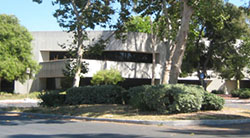
Children who are gifted benefit when they are provided with an educational program that is tailored to their needs. While many public education systems offer gifted and talented programs, they do not always fit a child’s special learning style. For this reason, schools for gifted children are the preferred choice for parents who want to give their child the best opportunities to develop their talents. To help take the guesswork out of the differences between these programs, here are five defining features of schools for gifted children that make them stand out.
Self-Paced Learning
In traditional school settings, children are expected to work on the same skills and concepts and their peers. While this works for most children, gifted learners become bored when they are restricted to a one-size-fits-all schedule. This is why many high achieving students fail to complete assignments and quit paying attention in class. To prevent this, a school designed for these fast learners will allow them to enroll in classes that fit their current level of understanding. Once they have mastered the concepts covered in the course, they can move on to the next one without waiting for others to catch up.
Community-Based Projects
High ability students are more likely to work hard if they can see the reasoning behind learning certain skills. Due to their advanced understanding, gifted students also worry more than their peers about world issues such as hunger and homelessness. A gifted learning program covers these two common challenges by providing service learning opportunities where children can practice their developing talents in real world situations.
Narrative Evaluations
Traditional letter grades make sense in a public education system since classrooms are often filled with students and teachers lack the time to write more than a brief comment on a paper. However, gifted learners thrive on constructive feedback that guides them in the direction they need to self-correct their strategies. Whether they are trying to solve a math problem or write a research essay, receiving authentic feedback regarding their efforts helps them continue moving in the right direction.
Teacher Education and Training
Teaching gifted learners requires compassion and flexibility. More importantly, it takes training beyond the typical education degree to know how to respond to the unique needs of a high achieving student. For this reason, gifted learner programs focus on selecting teachers and additional staff members with advanced degrees that include gifted and education training.
Smaller Class Ratios
Private schools have budgets just like public education systems, yet they leave enough room to ensure that no child is overlooked in the classroom. Smaller student to teacher ratios makes it possible for children to enjoy individual attention that supports their learning. The intimate setting created by having fewer students in a class also fosters a sense of community that benefits gifted learners socially.
When you walk into a program for gifted students, you will notice right away the differences in how the curriculum is implemented. During individual study times, you may see one student working on math while another is conducting a personal science experiment. Students in these programs also tend to be intensely focused on their work, although the occasional shout of joy as they master a new concept is frequently overheard in the classroom. Once you visit a school for gifted children, it is easy to see how each feature has been carefully planned to nurture a child’s individual talents in every learning area.
If you are reading this on anything other than OakCrestAcademy.org, it is stolen content.
If you are interested in learning more about Oak Crest Academy, visit our website here.
Keep up with our blog for more news and information here.




